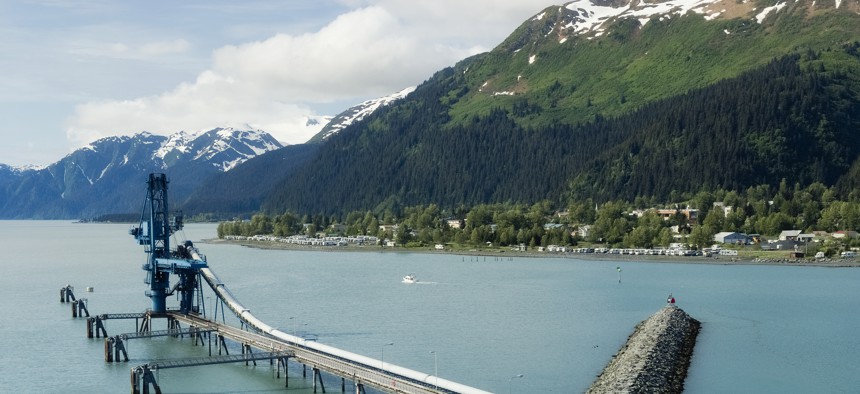Alaska uses cloud, AI to modernize dividend payouts

dani3315 via Getty Images
The state will streamline its Permanent Fund Dividend, a program that pays eligible residents a portion of oil and mining revenue but has been beset by aged technology and processes.
Every year, eligible Alaska residents receive a payment from the state’s Permanent Fund Dividend, benefiting from a portion of the revenue the state receives from oil and mining.
Last year, the state’s Department of Revenue announced that the over 600,000 Alaskans deemed eligible for the payout would receive $1,702, which included a dividend of just over $1,400 and a one-time energy relief payment. The payments, which typically are between $1,000 and $2,000 but have been as high as just over $3,000, are almost universally popular among state residents, who have said in public polling that the dividend has helped materially improve their lives.
But the dividend, which has existed since the 1970s, has struggled to keep up with the demands of the modern age. Applications are processed every year using technology from the late 1990s, while residents lack insight on the status of their application and forms are scanned by systems that do not communicate well with the state’s Dividend Application Information System. Any follow-up with an applicant for missing paperwork or other issues is manual, as are appeals.
A request for proposals the state issued in October last year called for modernizing the system, with $7.5 million set aside for the project this year. And in December, the state announced a partnership with digital transformation consulting company Saige Consulting to deliver a cloud-based application designed to drastically improve employee and applicant experience, and use artificial intelligence to help get there.
The new system will automate many processes, improve data management, modernize the user experience to include streamlining correspondences and the mail-in application process, as well as enhance fraud prevention measures. It also is expected to shorten application review times, which caused a backlog and delayed payments for up to two years. The modernized system is expected to go live early next year.
“[Alaska leaders] were champions of change,” said Charles Hu, a senior partner at Saige. “What they could have done is essentially pushed this down to the next administration. But they said, ‘OK, we cannot continue to just push this to the next administration and continue to try to service our constituents with these archaic systems.’”
Based on an initial assessment, the new system is expected to save the state millions of dollars, especially through process automation and other efficiencies. Residents are estimated to save 116,000 hours each year through fewer application queries and follow-up communications.
Perhaps the biggest headache for Alaska residents — and employees at the Department of Revenue — is the process of further eligibility review and appeals for applications. That process, which typically requires applicants to submit additional paperwork, would also need employees to manually review that paperwork and then use software to generate letters to update applicants on their progress. Appeals may also require hearings to be scheduled, which could be cumbersome too.
“[The process] was designed and developed so long ago that it really dragged the processes and the team down and essentially was then creating more work and more headache on both the Alaska residents that are trying to get their dividend check, and the people wanting to help their citizens to process their applications,” Hu said.
Meanwhile, residents themselves only see three statuses on their applications: approved, denied or more information required, with no other transparency about how they are moving through the process. This new system aims to change that, and not only reduce the backlog in applications but also improve transparency. And generative AI helps more quickly produce correspondence, while AI can also help check for fraudulent claims.
This shift in Alaska is part of a broader push to modernize government agencies and embrace the cloud, AI and other emerging technologies. The effects of such tech have been noticeable in other states: Wisconsin can now more easily process licensing applications after moving to the cloud and using AI, while others like Florida are looking to provide more individualized service to constituents. Hu said the key driver behind modernization must be making life easier for agency employees and the people they serve.
“We don't build technology for technology’s sake, and hopefully the impact ultimately we're hoping to achieve is the value that the citizen has: more transparency, seamless submissions,” Hu said. “Then on the back side, using AI in specific areas to streamline and make this all more efficient.”
State officials are hopeful this modernization can help maintain the dividend for decades to come. In a statement released by Saige, Fadil Limani, deputy commissioner of the Alaska Department of Revenue, said the effort will help “all residents benefit from cutting-edge technology and an improved digital experience.” He added that the use of newer technology will be a “true game changer for generations of Alaskans.”






